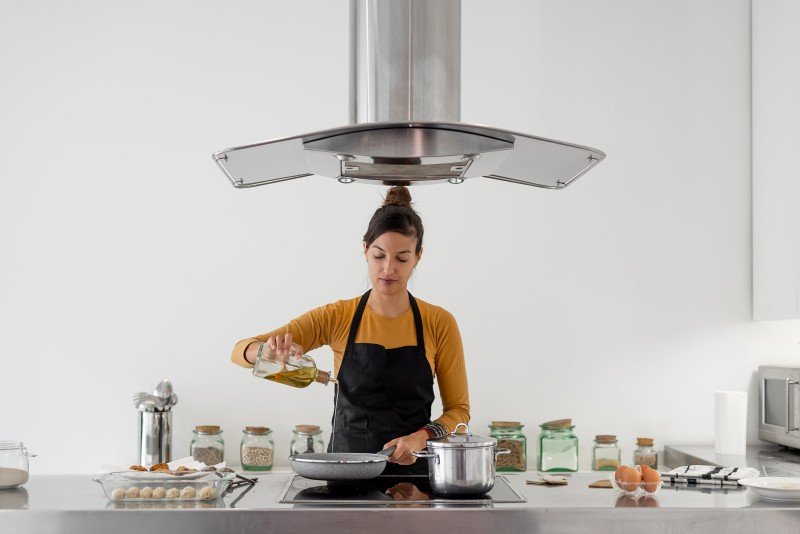Understanding Oven Hobs: The Heart of Culinary Crafting
In the realm of modern-day kitchen areas, the oven hob sticks out as an important home appliance. Oven For Sales is it a central component for cooking a variety of meals, but it also influences kitchen aesthetic appeals, functionality, and efficiency. This post looks into the types of oven hobs, their features, advantages, and upkeep suggestions. Furthermore, it deals with some frequently asked concerns to supply a detailed understanding of this important kitchen home appliance.
Types of Oven Hobs
Oven hobs can be categorized into several types based on their energy source and design. Comprehending these variations can help consumers make informed choices when choosing the perfect hob for their kitchen needs.
1. Gas Hobs
Gas hobs utilize natural gas or gas as fuel, providing accurate temperature level control and instant heat. They are preferred by many chefs for their capability to offer visual feedback through flame.
Pros:
- Quick heat-up time.
- Exact temperature adjustments.
- Suitable with all types of pots and pans.
Cons:
- Requires a consistent gas supply.
- Security concerns with open flames.
- Needs more maintenance.
2. Electric Hobs
Electric hobs are powered by electricity and feature smooth glass or ceramic surface areas. They frequently can be found in two types: coil and solid.
Pros:
- Sleek look.
- No open flames, decreasing security risks.
- Easy to clean.
Cons:
- Slower to warm up and cool down.
- May need particular pots and pans (induction).
- Some may have unequal heat distribution.
3. Induction Hobs
Induction hobs utilize electro-magnetic energy to directly warm pots and pans. They only deal with ferromagnetic cookware.
Pros:
- Very energy-efficient.
- Quick heating & cooling times.
- Safe, as the surface remains reasonably cool.
Cons:
- Limited to specific types of cookware.
- Greater preliminary expense.
- Can produce noise when in usage.
4. Solid Plate Hobs
These electric hobs feature strong metal plates that warm up and retain heat for cooking.
Pros:
- Durable and trustworthy.
- Simple operation.
Cons:
- Takes time to warm up.
- Less efficient than induction and gas models.
| Hob Type | Heat Source | Looks | Maintenance |
|---|---|---|---|
| Gas Hobs | Gas | Conventional | Moderate |
| Electric Hobs | Electrical power | Modern/Sleek | Low |
| Induction Hobs | Electro-magnetic | Contemporary | Low |
| Strong Plate Hobs | Electrical energy | Traditional | Average |
Features to Consider When Choosing an Oven Hob
When selecting the perfect oven hob for your kitchen, there are a number of vital functions to take into account. These include:
- Size: Ensure the hob fits the designated area in your kitchen.
- Number of Burners: Consider your cooking style and how numerous burners you'll need.
- Control Type: Look for user-friendly controls, whether touch-sensitive or knobs.
- Security Features: Many modern-day hobs consist of security measures like flame failure gadgets or child locks.
- Energy Efficiency: Choose energy-efficient models to save money on energy bills and minimize your ecological impact.
Advantages of Using an Oven Hob
The oven hob supplies several benefits that cater to both amateur cooks and expert chefs. Here are some key benefits:
- Versatility: Whether boiling, frying, simmering, or sautéing, an oven hob accommodates various cooking techniques.
- Convenience: Many hobs included extra functions like timers and automated shut-off systems for added convenience in hectic kitchens.
- Boosted Cooking Control: The immediate heat responses of gas and induction hobs permit much better control over cooking temperatures.
- Design Enhancement: Modern hobs can boost the overall aesthetic of a kitchen, adding a contemporary touch.
Upkeep Tips for an Oven Hob
To ensure the durability and effectiveness of an oven hob, proper maintenance is important. Here are some maintenance ideas:
Regular Cleaning:
- Use a soft fabric and mild cleaning agent to tidy surface areas after each usage.
- For induction and ceramic hobs, avoid abrasive cleaners to prevent scratching.
Look for Wear and Tear:
- Inspect rubber seals and connections in gas hobs regularly for any damages or leaks.
- Ensure electrical connections are safe in electric hobs.
Professional Servicing:
- Schedule regular upkeep talk to a qualified specialist to avoid significant problems.
The oven hob is a crucial component in any kitchen, serving as a focal point for culinary endeavors. Whether selecting gas, electric, or induction, understanding the various types, features, and upkeep requirements is important for making an educated decision. A well-chosen hob not just improves cooking effectiveness however also improves the overall kitchen experience.
Often Asked Questions (FAQs)
1. What type of hob is best for a novice?
Electric hobs are often preferred by beginners due to their ease of usage and upkeep.
2. Can I utilize all pots and pans on an induction hob?
No, induction hobs need ferromagnetic pots and pans for them to work properly.
3. How do I know if my gas hob is working effectively?
Routinely look for even flame distribution and listen for any hissing noises that might suggest leakages. If in doubt, speak with a professional.
4. Is a higher rate constantly better for hobs?
Not always. While higher-priced models may provide sophisticated features, several mid-range items provide exceptional efficiency and durability.
5. Can I install a hob myself?
It is recommended to hire a professional, specifically for gas hobs, due to security issues and regional regulations.
By understanding the subtleties of oven hobs, home cooks can make a well-informed choice that aligns with their cooking aspirations and kitchen styles. Picking the best hob boosts both the cooking experience and kitchen aesthetic appeals, making it a crucial investment for any home.

